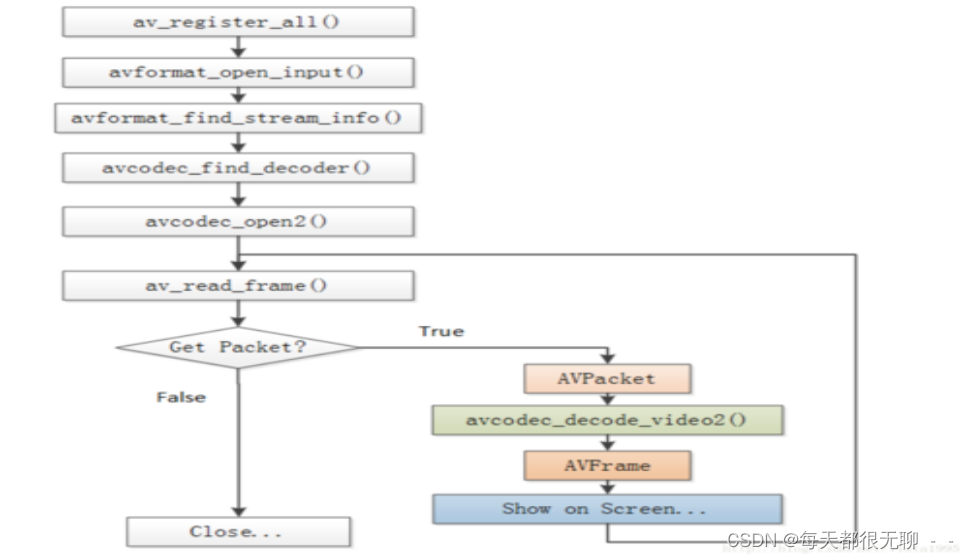基本流程图,实际使用情况要复杂一些

包含头文件:#include “libavformat/avformat.h” 作用:初始化 libavformat和注册所有的muxers、demuxers和protocols。基本所有的ffmpeg第一步都是它。
avformat_open_input()作用:打开对应的文件 原函数:avformat_open_input(AVFormatContext **ps, const char *filename,AVInputFormat *fmt, AVDictionary **options)
AVFormatContext **ps:一般是avformat_alloc_context()申请的一个空间指针地址,类似于文件描述符,然后通过操作文件描述符来操作你打开的文件。
const char *filename:就是你要打开的文件名。
AVInputFormat *fmt:一般都写成NULL.
AVDictionary **options:附加选项写为NULL.
使用方法:
if (avformat_open_input(&pFormatCtx,url,NULL,NULL)!=0){
printf("Couldn't open input stream.\n");
return -1;
}
作用: 寻找对应的流信息。 原函数: int avformat_find_stream_info(AVFormatContext *ic, AVDictionary ** options)
AVFormatContext *ic: 文件描述符
AVDictionary **options : 附加选项写为NULL.
使用方法:
if(av_find_stream_info(pFormatCtx)codec_id);
if (pCodec == NULL) {
printf("Codec not found.\n");
return -1;
}
作用: 该函数用于初始化一个视音频编解码器的AVCodecContext。 原函数: int avcodec_open2(AVCodecContext *avctx, const AVCodec *codec, AVDictionary **options);
AVCodecContext *avctx: 获取指向音频流的编解码器上下文的指针 const AVCodec *codec: 编码器名称 AVDictionary **options:附加选项写为NULL. 使用方法:
if (avcodec_open2(pCodecCtx, pCodec, NULL) = 0)
{
}
作用: 该函数的作用是实现压缩视频的解码。 原函数: int avcodec_decode_video2(AVCodecContext *avctx, AVFrame *picture, int *got_picture_ptr, const AVPacket *avpkt);
AVCodecContext *avctx:文件描述符 AVFrame *picture:输出参数 int *got_picture_ptr:该值为0表明没有图像可以解码,否则表明有图像可以解码 const AVPacket *avpkt:输入参数,包含待解码数据。



